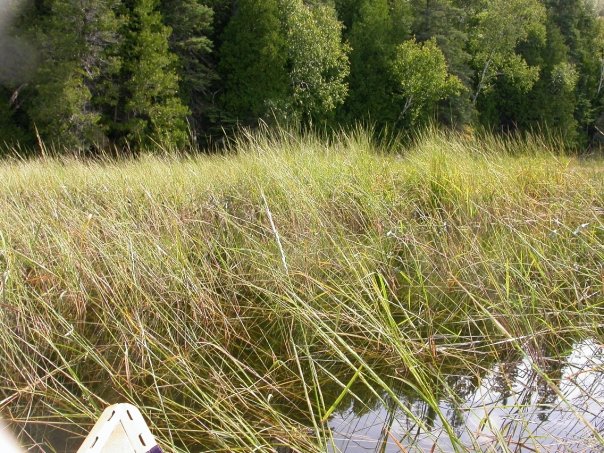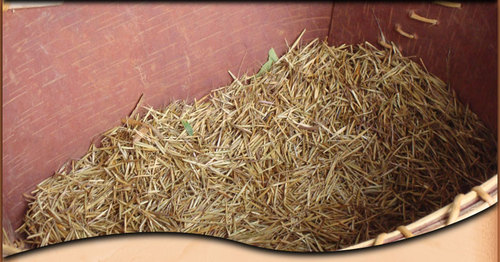Ardoch Algonquin First Nation
Manòmin is the Heart of the Community

“I have recollections starting about six years old and remember then and until war time in 1939 of Indians coming from other areas for the rice harvest, more so that at any other time, many from Alderville. I remember the smoke house, tanning of hides, moccasins, learning things from Ross and Bill Beaver, my father and others, and dancing the rice. Those were the very hard times of the depression and the wild rice was a factor in pulling the Indians, the local settlers and ourselves through.” - Harold Perry, 1981
Ardoch Algonquin First Nation's relationship with Manòmin goes back to the mid nineteenth century when the surrounding forests were being burned and clear cut as part of the square logging trade. At that time, Algonquin families were struggling to survive because of the thick black smoke that was all around. Animals had fled and traditional subsistence plants were not able to sustain growth because of the smoke. Learning of the struggle, relatives at Alderville First Nation sent Manòmin seeds which were planted in the lake by the Whiteduck family. The seeds grew into three beds of Manòmin which Ardoch families have cared for ever sense.
In 1979-1980, the beds of Manòmin at Ardoch came under attack by the MNR who tried to open harvesting to commercial interests. Ardoch Algonquin First Nation families along with allies from various Indigenous communities and settlers withstood a 60 day standoff with the MNR and the OPP and prevented any commercial harvesters from gaining access to these Manòmin beds. Elder Harold Perrry was instrumental in leading the community to a successful conclusion of that conflict. It was Harold's ancestors who received Manòmin seeds from Alderville and his family who have been the primary caretakers of Manòmin in Ardoch since that time.
Manòmin is a plant with spiritual significance that stretches back to the Creation of Anishinbaabe people and the Great Migration. During that time our ancestors were told to continue until they saw this plant growing on the water. As a result Anishinaabe people settled all over the Great Lakes and developed relationships over thousands of years. Omaminwinini (Algonquin) people followed the paths and tributaries of the Kiji Sibi and the ancestors of Ardoch Algonquin First Nation families settled within the Tay, Rideau, and Mississippi River watersheds.

GATHERED MANÒMIN
There are various narratives about the origin of Manòmin. Most centre around Wisakedjak or Nanabozho and his exploits in the Great Lakes. The story goes that Wisakedjak was sent out by his grandmother Nokomis to fast while on a long journey. After many days he came to a large lake with Manòmin growing in several beds. Having never seen Manòmin before, he didnt think it was good to eat. He was drawn to it because it was a beautiful plant that swayed in the breeze and as he watched it he saw seeds caught in the wind blow across the water. He built a canoe out of birchbark and gathered some to take back to his grandmother. They sowed them into a nearby lake so that it would grow the next year.
Later as he walked along a river bank he saw similar grass growing up in the water. They spoke to him and said “Wisakedjak! Are you hungry, we are tasty.” So he gathered some and ate it. “Oh you are very good. What are you called?” The grass answered him, “Manòmin.” He ate and ate and ate and then grew tired and laid down for a nap. He remembered that this was the grass he had sewn with his grandmother, that which had come from the original lake. Manòmin was thus given to the Anishinaabe by Wisakedjak who took it from the original lake of the Creator and placed it in the Great Lakes.
Sometime after Wisakedjak goes visiting some ducks and they invite him in for supper. Having nothing to feed their guest the male duck takes off flapping his wings “Kwish” "Kwish” “Kwish” and land in a nearby Manòmin bed and returns with a mouth full of Manòmin which he drops into a cooking pot. His wife sets the pot on a hot stone and it cooked and swelled and soon there was a large feast for everyone to enjoy. The following day Wisakedjak reciprocates and his wife is without food to prepare. Attempting the same process, he changes himself into a large duck and flies off to find Manòmin. On his return he looses his balance and falls but manages to make it back and goes to spit out the Manòmin he gathered into the cooking pot. Instead of Manòmin, however, he spits out sour mud. Wisakedjak had mistakenly turned himself into a mud-diver. The horrible odor caused his wife to throw it out. The duck flies out once again and gets Manòmin for them. Once it is cooked the duck refuses to eat it saying instead that “bring this to the people who are hungry, my people have lots of food.” From that day on Anishinaabe people gathered Manòmin at the end of the summer.
Nawigishkoke from Scugog told Alexander Chamberlin in 1888 that men and women had particular knowledges about gathering and processing Manòmin and that each was important to the relationship Anishinaabe people had with Manòmin. In that time period, women and girls often gathered Manòmin in canoes and then put it on a deer skin put into a hole dug into the ground. Boys at this point would dance the rice as sacred songs were sung. After this was completed the rice was then put into wide winnowing baskets and shaken until the husks fly away. According to Nawigishkoke, the rice would often also be parched by laying the danced rice on top of basswood or cedar mats over a fire and then winnowed it again. She said that the process of drying Manòmin over these mats gave it a great taste. This would then allow the people to survive through the whole year. It nourished their physical bodies as well as their spirits.
Source: http://www.aafna.ca/manoomin
Magazine
No information